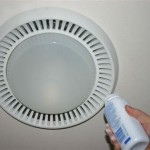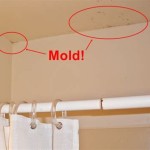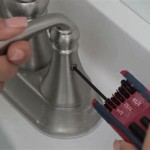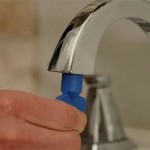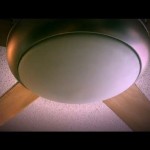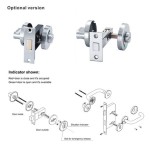How To Get Rid Of Mildew On Bathroom Walls
Mildew, a surface fungus, thrives in damp, warm environments like bathrooms. Its presence not only detracts from the aesthetic appeal but can also pose health concerns. Effective mildew removal requires a combination of cleaning and preventative measures. This article outlines practical steps to eliminate existing mildew and prevent its recurrence.
Identifying Mildew
Mildew typically appears as black, gray, or brown spots or patches. It often has a musty odor. Common locations include grout lines, caulking around fixtures, and painted surfaces. Differentiating mildew from dirt or soap scum is crucial for selecting the appropriate cleaning method.
Safety Precautions
Before commencing any mildew removal process, certain safety measures are essential:
- Adequate ventilation is paramount. Open windows and doors or use a fan to circulate fresh air.
- Protective gear, including gloves and eye protection, should be worn to prevent skin and eye irritation.
- Children and pets should be kept away from the area during the cleaning process.
Cleaning Solutions for Mildew Removal
Several effective cleaning solutions can be utilized for mildew removal:
- White Vinegar: A natural and readily available solution. Undiluted white vinegar can be sprayed directly onto the affected area.
- Baking Soda Paste: A mixture of baking soda and water creates a paste that can be applied to mildew. Allow it to sit before scrubbing.
- Bleach Solution: A stronger solution for stubborn mildew. Dilute bleach with water, typically one part bleach to ten parts water.
- Commercial Mildew Removers: Various commercial products are specifically formulated for mildew removal. Follow the manufacturer's instructions carefully.
Cleaning Process
Effective mildew removal requires a systematic approach:
- Preparation: Remove any loose debris or dirt from the affected area using a brush or vacuum.
- Application: Apply the chosen cleaning solution liberally to the mildew-affected area, ensuring complete coverage.
- Dwelling Time: Allow the cleaning solution to dwell for the recommended time. This typically ranges from 15 to 30 minutes, depending on the solution and the severity of the mildew.
- Scrubbing: Use a scrub brush, sponge, or cloth to scrub the mildew. For grout lines, a toothbrush can be particularly effective.
- Rinsing: Thoroughly rinse the area with clean water to remove all traces of the cleaning solution.
- Drying: Dry the area completely with a clean towel or allow it to air dry. Proper drying is crucial for preventing mildew regrowth.
Preventing Mildew Growth
Preventing mildew growth involves minimizing moisture and maximizing ventilation:
- Ventilation: Run the bathroom exhaust fan during and after showers or baths. Open a window if possible.
- Moisture Control: Wipe down shower walls and floors after each use. Repair any leaking faucets or pipes promptly.
- Regular Cleaning: Clean the bathroom regularly, paying particular attention to areas prone to mildew growth. A weekly cleaning with a mildew-resistant cleaner can be beneficial.
Dealing with Stubborn Mildew
For particularly stubborn mildew, more aggressive measures may be necessary:
- Repeat Application: Repeat the cleaning process multiple times, allowing longer dwell times for the cleaning solution.
- Professional Cleaning: For severe mildew infestations, consider contacting a professional cleaning service.
- Replacement: In some cases, replacement of severely damaged materials, such as caulking or grout, may be the most effective solution. This ensures complete mildew removal and prevents future growth.
Maintaining a Mildew-Free Bathroom
Consistent attention to moisture control and regular cleaning are crucial for maintaining a mildew-free bathroom. By implementing the preventative measures outlined above and addressing mildew promptly, one can effectively minimize the likelihood of recurrence and maintain a healthy and aesthetically pleasing bathroom environment.
Natural Ventilation and Lighting
Maximizing natural ventilation and lighting can significantly aid in mildew prevention. Sunlight has natural antifungal properties. Ensuring adequate sunlight reaches the bathroom can inhibit mildew growth. Regularly opening windows allows for air circulation, reducing humidity levels and further discouraging mildew development.
Choosing Mildew-Resistant Materials
When renovating or remodeling a bathroom, selecting mildew-resistant materials can offer long-term protection. Mildew-resistant paints, caulks, and grouts are formulated to inhibit mildew growth. These materials can provide an additional layer of defense against mildew development, even in high-humidity environments.

How To Get Rid Of Mold In The Shower On Bathroom Walls Clorox

How To Remove Mold From Walls True Value

How Do You Get Rid Of Mould On Bathroom Walls Igloo Surfaces

Bathroom Ceiling Mold Removal When To Clean Call Branch Environmental

How To Get Rid Of Mold In Bathroom 2024 Tips From Puroclean

How To Get Rid Of Mould And Mildew In Your Bathroom Rac Wa

A Handful Of Ways To Remove Mold On Bathroom Walls Clean Water Partners

How To Get Rid Of Mold On Bathroom Walls Family Handyman

How To Get Rid Of Black Mold In Bathrooms

The Ultimate Guide On How To Clean And Get Rid Of Mold Pro Housekeepers
Related Posts
